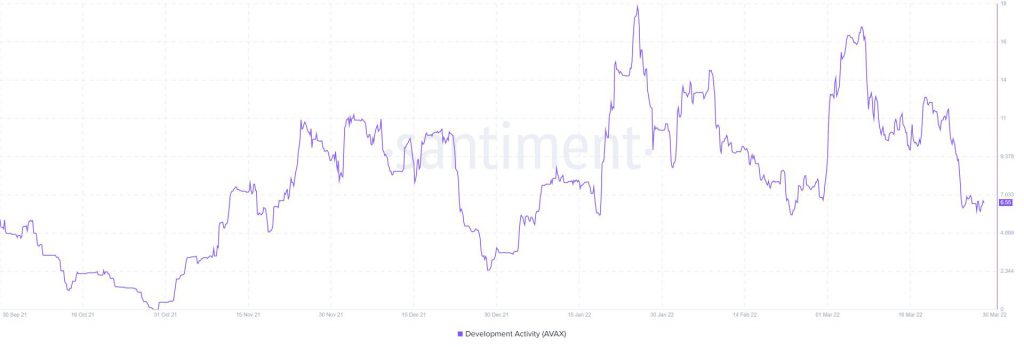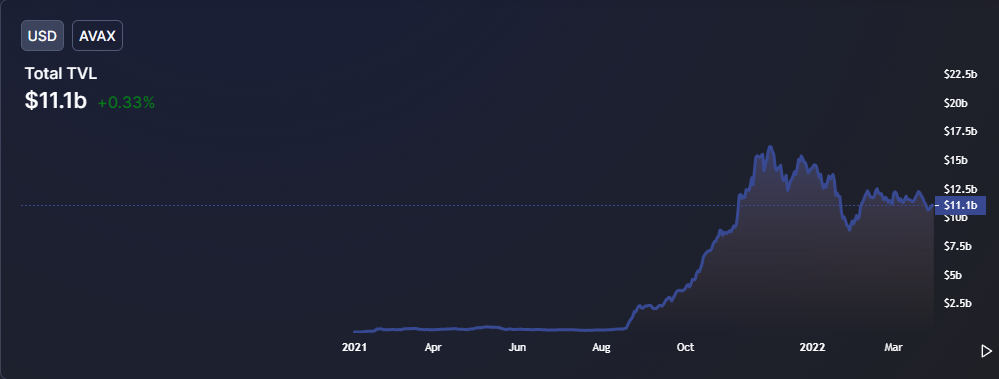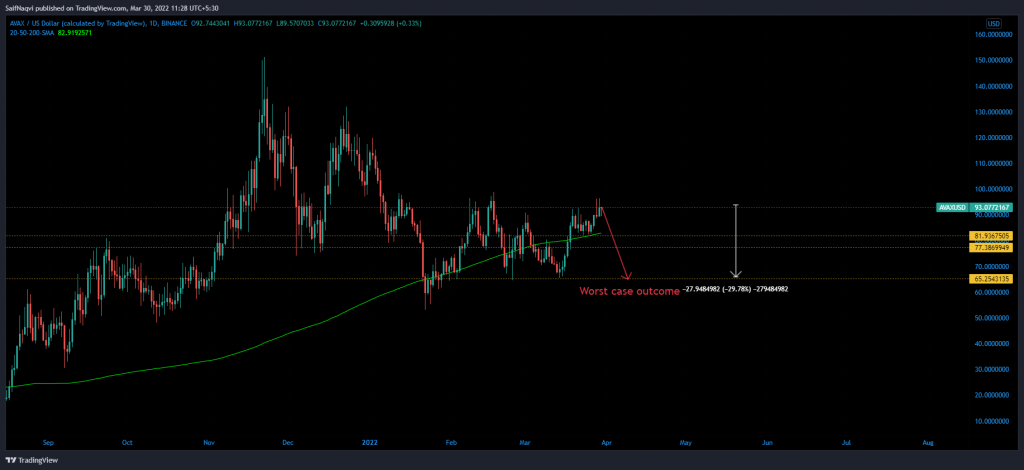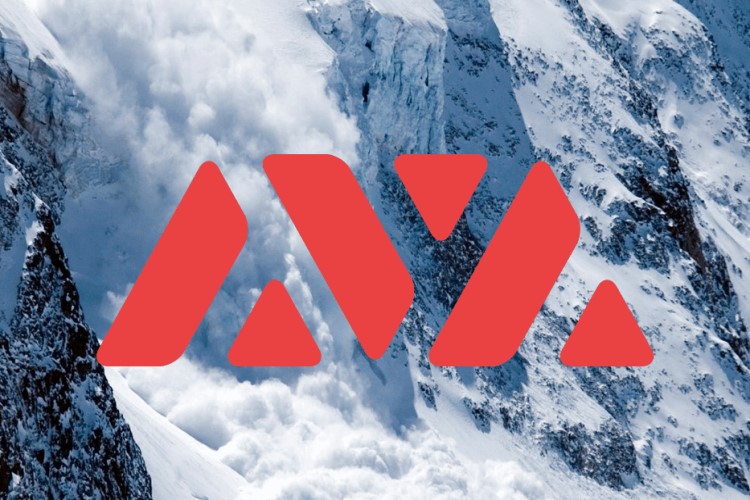After a strong rally two weeks ago, Avalanche’s price has fallen off the radar. Its weekly ROI of 10%, although positive, was inconsistent with peers. Declining development activity and a stagnant TVL are a few contributing factors that could pressurize AVAX and trigger a correction.
Avalanche has been a consistent performer during risk-on broader markets but the altcoin digressed from the said trend lately. Daily gains of 3%, 4.6%, and 3.6% made over the past few days were significantly lower than peers Solana and Cardano – both of which had solid performances on the chart.
Development Activity, TVL Decline


Although muted price movements are a part and parcel of market cycles, AVAX’s lackluster nature may be, in part, due to some external forces. The chart above showed that AVAX’s development activity has declined constantly since 23 March and was now at its lowest level since 22 February. A similar trend between 7-11 March had coincided with a 16% AVAX correction. The metric is used to gauge the pace at which a project is continuously polishing and upgrading its features.

On the network front, the situation wasn’t any better. Avalanche’s Total Value Locked (TVL) has fluctuated between $12.2-$11.3 Billion throughout March, only to slip to a monthly low of $10.95 a couple of days back, pointing to receding interest in the network.
Avalanche Price


The implications of these factors may not be so severe just now, with the candles trading above the 200-SMA (green), but the same could turn ugly real quick.
Avalanche’s stronger near-term support on the chart lay between $77 and $82. The area also contained the daily 200-SMA (green). If the abovementioned weakness persists and AVAX closes below $77, a major correction could follow. In a worst-case scenario, the price could even retest 14 March’s low of $65, marking a full 30% decline from AVAX’s press-time level.





